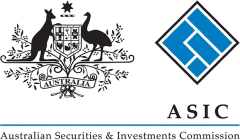
Something odd is happening in the skies. According to recent reports, passengers have heard unidentifiable moans and groans haunting their flights. In one instance, engineers blamed a faulty PA system — but it could only have amplified something that was already making a sound. Could the groans have been the collective dissatisfaction of the airline’s frustrated customers?
Meanwhile, on the ground, an actual mountain of orphaned suitcases rose from the concrete in Heathrow as complaints soared by over 700% during 2022’s “summer of lost luggage.” With passengers already feeling guilty about flying in the climate crisis, the industry has a job on its hands to convince us to get on board.
Folk love to grumble about airlines. While it can be exciting, air travel is a fundamentally uncomfortable and inconvenient privilege. Additional delays and curtailed legroom have a greater emotional impact when you’re tired and far from home (or trying to be). If the airline landed you with unexpected fees, long queues or grumpy service before you even got on board, you’re less likely to feel charitable about them when uncontrollable factors like the weather impact your flight.;
But which are the airlines that successfully navigate the treacherous route to customer satisfaction? S Money analysed thousands of tweets to find out the most loved and hated airlines around the world — according to what customers say about them on Twitter.
What We Did
S Money found the official Twitter handles of all the major airlines with a Twitter account and collected tweets that mentioned them. Then, we analysed all tweets using an AI sentiment tool to give either a positive or negative score. We considered the Most Loved to be the airlines with the highest percentage of positive tweets and the Most Hated to be those with the most negative tweets.
Key Findings
- Canada’s Bearskin Airlines is the world’s most loved airline, with 53.4% of tweets about it being positive
- In Australia, Jetstar Airways, Qantas and Virgin Australia all have a >50% negativity rating.
- India’s Go First is the world’s most hated airline, with a 73.8% negativity rating.
- The U.S. has two of the world’s 10 most hated airlines: Spirit Airlines (62.2% negativity) and Frontier Airlines (61.9% negativity).
Here are the top ten most loved and most hated worldwide:

Regional Canadian Airline is World’s Most Loved
Twitter is where we turn to evangelise or grumble about an airline (once the guy in the middle seat gets bored of hearing it). And Canadian airline users seem to be the most passionate of all. Six of the 20 airlines in the top 10 most loved and hated lists are from Canada — three are loved, and three are hated. Australia has only a single airline in the hated list, while the U.S. and India each have two airlines among the most hated but also none among the most loved. Here’s a map of the most loved airline from every country, followed by one of the most hated.

Three Canadian airlines make the top ten most loved. While Pacific Coastal Airlines and Canadian North place second and fourth, respectively, Bearskin Airlines is the world’s most loved. The Ontario-based domestic airline runs a thoughtful and reliable service to 11 regional destinations, according to their company website. 53.4% of tweets about the airline are positive. If its Tripadvisor reviews are anything to go by, this could be down to the kindness of staff, cleanliness of the flight or efficient boarding.

India’s Go First airline is the world’s most hated by a gap of over 5%. Tardiness and poor communication about delays are among passengers’ main gripes, but Go First also hit the headlines lately when a plane forgot to allow passengers to board before taking off. Some 54 passengers on the flight’s third and final relay bus watched in dismay as the plane left without them by mistake; Go First put them on a replacement flight from Bengaluru to Delhi four hours later.
North America: Bearskin is Most Beloved Airline
Perhaps Canadians are too polite to tell it to the person with whom they share an armrest? Canadian airlines dominate both the most loved and most hated list for the continent. Number one, Bearskin, gets a lot of love for reaching those hard-to-reach places — and for the views it offers along the way.

Only one Mexican airline makes the chart. Volaris endures the wrath of travellers for its obstinacy in giving refunds for cancelled flights, among other reasons. One Twitter user alleges that Volaris encouraged Covid-positive passengers to get on board rather than claim a refund.
South America: Penguin Plane Wins Smiles in Chile
Chile’s Aerovías DAP is the stand-out airline in South America, with a 41.1% positivity rate and just 3.68% negativity. The airline group’s trips to remote Antarctica come with a penguin-style paint job, and even when doors fly off airborne planes, the passengers keep smiling. (That particular aircraft quickly returned home without further ado.)

Copa Airlines Colombia leads a trio of Colombia-based airlines towards the top of the most hated table. Copa Colombia is actually owned by a Panamanian company, making Avianca — Colombia’s biggest airline — the most prominent Colombian company in our data. “I only hope that Avianca Express, Avianca's new regional airline, is not as expensive, nor does it provide such bad service as the latter,” remarks one unhappy customer.
Europe: Portugal’s TAP Air Empire Divides Opinions
Portugal’s state-owned TAP airline has brands in both first and last place in Europe. The TAP Express brand seems to be getting customer service right (“The crew was very nice. Muito obrigado.”). Unfortunately, the parent brand’s treatment of employees has led to strikes and knock-on effects for customers. And their seats have shrunk.

There are two British entrants, one on each chart. Guernsey’s Aurigny Air Services offers flights between the island and the UK, Ireland, France and Spain. The distinct yellow tail of its planes makes Aurigny a favourite among the plane-spotters of Twitter. Wizz Air gets less love for the “appalling treatment of customers, especially with regard to refunds, claims and their approach of undercutting prices to boost cashflow and then unilaterally cancelling flights,” according to one tweet. Users also like to create imaginative, disparaging variations on the airline’s name, one of the cleanest being #SwizzAir (swizz being British slang for “a swindle or disappointment”).
The Rest of Asia & Oceania: Australian Jetstar Second Most Hated
Malaysia’s MYAirline sets the pace in this region, with an impressive 57.5% positivity rating. One user has contributed both positive and negative tweets to the discussion in a lengthy thread assessing MYAirline’s strengths and weaknesses: “Super punctual… their seat literally suit our height… [but] Masha allah last night I felt like my heart was about to be ripped out by the sound of its landing hahahahaha!”

Jetstar Airways has the advantage over Go First of actually allowing its passengers to board before take-off. But there, the positivity ends. With a 67.5% negativity rating, the Australian airline is the third most unpopular in our entire study. Lost and damaged luggage is the prevailing theme, although multiple reports of sickness are also going around.
The Middle East & Central Asia: Turkish Airlines First, Second and Third Most-Hated
Emirates is the largest major airline in the Middle East and one of largest long-haul airlines in the world, flying to over 152 destinations across six continents. The airline was the TripAdvisor Travellers’ Choice Winner in the years 2017 through to 2020 and with 29.7% positive tweets, it is the most loved airline in the region, according to our analysis. This is likely due to its stellar reputation of in-slight service, comfort and safety. According to SkyTrax, the airline receives a 4-star rating.

Meanwhile Turkey takes the first, second and third spot amongst the most hated airlines. Turkish Airlines, Pegasus and SunExpress, receive the highest percentages of negative tweets with 57.1%, 52.8% and 49.2% respectively. Over 5,000 reviews on TripAdvisor rate Turkish Airlines as terrible, citing reasons ranging from baggage claim to customer service and delays. While the hatred for Pegasus could be due to its claims processing, which gets a score of just 6.0 out of 10, according to AirHelp.
Australia’s Most and Least Hated Airlines
Below, you’ll find all the Australian airlines in our study ranked from most to least hated. Jetstar sets the pace for consumer animosity (see above), but Qantas follows closely in its wake. Detours and cancellations are common complaints against Qantas, and the airline is also perceived as greedy. After engine failure forced one flight to issue a mayday call, one parody news profile suggested that Qantas would “halve the number of functioning engines on all flights moving forward following a successful trial of the cost-cutting exercise earlier today.”

Aviair is the country’s least hated airline. Aviair is an award-winning regional airline providing commercial and charter flights to some of Western Australia’s most hard-to-reach places. With a good track record and stunning views, Aviair provokes little negativity among its customers.
The Most Hated U.S. Airlines
Spirit has long been considered the ‘American Ryanair,’ pinning additional fees on anything they can and using ‘dark patterns’ such as automatic insurance opt-in to quietly bump up user outlay. “Is it policy for @SpiritAirlines to have the most uncomfortable and borderline painful armrests on an airplane?” asks one user. “And why are the bag fees more expensive than the flight?”

Avelo Airlines manages a far more respectable 18.8% negativity rating. They’re an “ultra-low” cost airline, so folk have low expectations — which, unlike worse-performing airlines, Avelo meets with quiet efficiency and a chirpy Twitter presence. “There were only two instances where I muttered profanity to myself to express the frustration I was feeling in regards to what was (and was not) happening at the time,” writes one reviewer. “I’d call that a win.”
Dark Sky Thinking
Airlines don’t have it easy: wavering fuel prices, ever-shifting regulations, the whim of the elements and the need to balance attracting new passengers against serving the “lifers” — loyal employees and customers who are heavily invested in the history and legacy of the brand. Add to that the fact that customers would rather grumble about poor service than rave about a calm, easy, punctual journey, and maybe it’s time we give the airlines a break.
Or perhaps not.
METHODOLOGY & SOURCES
We only included the major airlines from each country. We excluded charter, cargo, military, research, government and defunct airlines and kept only major companies operating scheduled flights.
Next, we collected the official Twitter handles of all airlines that had a Twitter account. We pulled up to a maximum of 4000 tweets in the English language that mentioned these airlines or their Twitter handles (for example, @airfrance). Any airline with less than 100 mentions (tweets) in total was excluded from our analysis.
We then studied all tweets using an AI sentiment tool that analyses text and attributes either a positive or negative score. If a tweet had more than a 50% predicted probability of being positive, it was labelled as positive and vice versa for negative tweets. We set a limit of 10 tweets per username to reduce the impact of bots and frequently posting accounts. This enabled us to calculate the percentage of positive and negative tweets for each airline in every country and continent.
Finally, we labelled the Most Loved as the airline with the highest percentage of positive tweets and vice versa for the Most Hated Airline.
The data was collected in December 2022.

